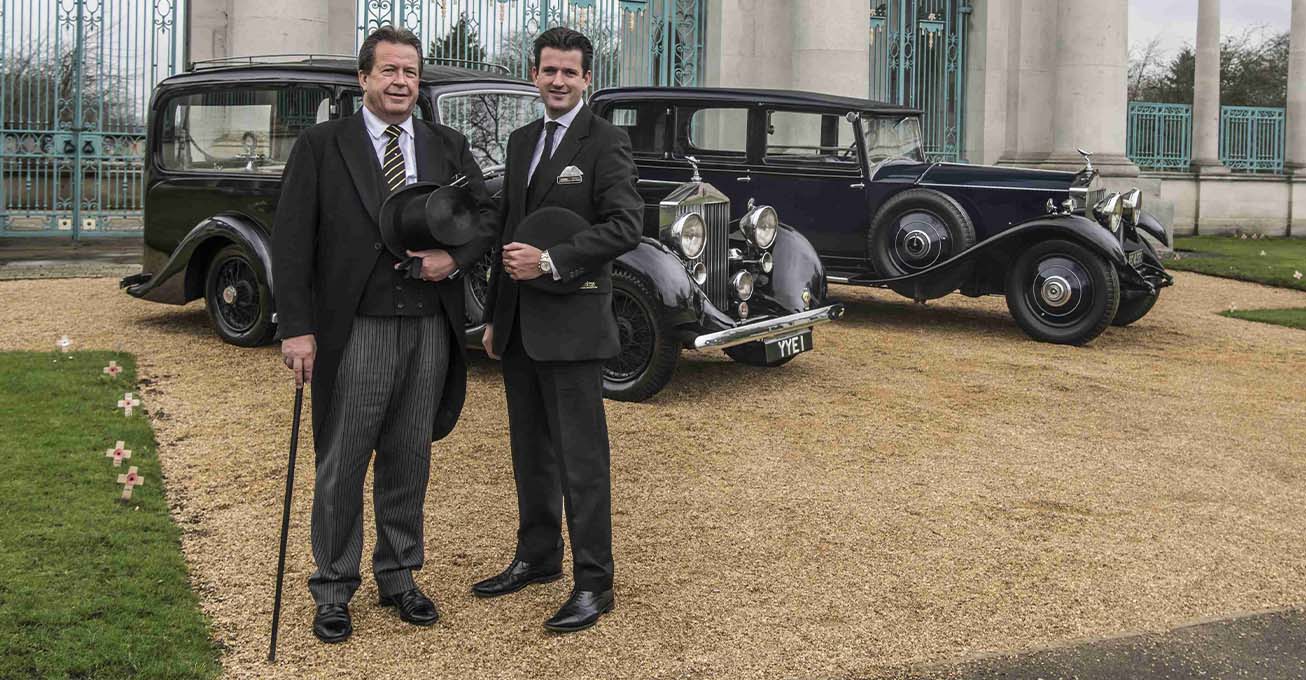Following a decade of intensive conservation and expert research, a new book available from November will reveal the importance of the spectacular Staffordshire Hoard to our knowledge of British and world history. The Hoard’s significance for the understanding of the years 600-675 AD, a particularly turbulent time in Anglo-Saxon history, is now much clearer and many fascinating individual discoveries are uncovered which transform ideas about the early Anglo-Saxon period.
The details include:
- Convincing evidence of precious Christian objects being carried as talismans into battle;
- Armour and weapons confirming the widespread and brutal events which happened between warring English kingdoms;
- Theories about why the Hoard was assembled and buried where it was discovered.
- Clues to who the potentially high-status owner of the treasure was.
Ever since the Hoard was discovered in a field near the village of Hammerwich, near Lichfield, Staffordshire on July 5th 2009, it has captured the imagination of an international audience. Its discovery led to a decade of research, conferences and innovative conservation techniques – all funded by Historic England with support from the joint owners Birmingham City Council and Stoke-on-Trent City Council, and the museums which care for the collection, Birmingham Museums Trust and The Potteries Museum & Art Gallery.
The results are now brought together in a beautiful monograph, published by the Society of Antiquaries of London. This book will be available to buy from November 1st and, along with a comprehensive database hosted by the Archaeology Data Service, will give the public unparalleled access to the Hoard. Led by Barbican Research Associates, it has been written by a team of specialists in Anglo-Saxon archaeology and history, together with expert conservators, and is illustrated throughout with full-colour photographs, maps and explanatory drawings. Key chapters discuss the decoration and meaning of the Hoard’s intricate ornament, the techniques of Anglo-Saxon craftsmen, the religious and historical background, and hoarding practice in Britain and Europe, to place this most exceptional find in context.
The majority of the Staffordshire Hoard treasure was crafted between the mid-sixth and mid-seventh centuries AD and buried between 650-675 AD. It is the largest collection of Anglo-Saxon gold and silver ever discovered. Although fragmented and damaged when found, there is nothing comparable in terms of content and quantity in the UK or mainland Europe. There are more than 600 significant objects found in 4600 fragments of mainly war gear, which combine to a total of nearly 4 kilos of gold, 1.7 kilos of silver and thousands of cloisonné garnets. The greatest mystery of the Hoard remains unsolved as it is unknown who owned and assembled this extraordinary treasure. But experts believe it could have belonged to a high-status individual, possibly an elite warrior or someone from the royal household.
The Hoard is largely composed of fittings stripped from swords and other magnificent battle gear, reflecting the written record of fierce warfare between rival kingdoms in the seventh century, and the growing power of the kingdom of Mercia in which it was found, under the militarily dominant pagan king Penda (c. 633–655) and his sons. Though most of these objects were in use during his long reign, no definite association between the Hoard and any ruler can be claimed; however, their wealth and quality unquestionably show that the treasure comes from an extremely high-status context.
The elaborately decorated sword-fittings, gilded silver helmet, and other superb trappings of the battlefield have now been identified as coming from different regions, representing the forces of some of the warring kingdoms competing for domination across England. The Hoard probably contains material from East Anglia and Northumbria, kingdoms which suffered significant defeats at the hands of Mercia. But in the end Penda was defeated and killed in battle by the Northumbrians! Some are closely related in their style and superb quality to finds from the famous Sutton Hoo royal burial. In all of this, the Hoard offers vivid confirmation of the widespread and brutal events described in near-contemporary written sources.
The Hoard belongs to the period when Christianity was gradually becoming established in England, following the missions to the pagan Anglo-Saxons at the end of the sixth and in the early part of the seventh century; the new religion was seen by some rulers as providing divine protection. Remarkably, the Hoard contains convincing evidence of precious Christian objects being carried as talismans into battle, presumably by priests, something hinted at by a few documentary sources. Though few in number, some of these spectacular objects are unique, and include the earliest known examples of Anglo-Saxon ecclesiastical metalwork, showing it to be not only of the highest quality, but also extraordinarily innovative in fusing traditional motifs with the new Christian objects.
The reasons why the Hoard was assembled and why it was buried, close to the major thoroughfare of Watling Street, remain unknowable; but it is a fascinating mystery. The book discusses several likely scenarios. These include the possibilities that it derives from decommissioned material from a royal treasury or battle-loot taken from the defeated, hidden for unknown reasons, but designed to be recovered and recycled at some future date; or that it was a ritualised concealment, intended to put tainted objects beyond reach forever. The meaning of the Hoard will continue to excite lively speculation.
Duncan Wilson, Historic England’s Chief Executive, said: “In 2009 we received a rather breathless call from an officer of the Portable Antiquities Scheme saying that something astonishing had been unearthed in an ordinary field near Lichfield. What followed exceeded all expectations and over the past 10 years we have been proud to fund the research into the Hoard that has allowed us to learn just what our 7th Century ancestors were capable of. The range of fascinating objects discovered has given us an extraordinary insight into Saxon craftsmanship and culture and this new monograph gives in-depth detail of everything we know about this spectacular discovery.”
Paul Drury, President of the Society of Antiquaries, said: ‘Ever since the Staffordshire Hoard was discovered in July 2009, it has captured the imagination of scholars and the public alike, here and abroad. We are honoured to be publishing it in this magnificently illustrated monograph, the eightieth in our Research Report series established over a century ago. Thanks to the generosity of Historic England it is available at a price that we hope will make it readily accessible to a wide audience, as well as ultimately in digital form online.’
Councillor Lorraine Beardmore, Stoke-on-Trent City Council cabinet member for culture, sport and leisure, said: “The publication of this fascinating book will be the culmination of 10 years of dedicated work by incredibly talented archaeologists, curators, and Anglo-Saxon experts. It’s a wonderful example of teams from different organisations working together to produce something truly inspiring and ground-breaking – and the results will now transform our perceptions of ancient Britain.
“The book is sure to spark further fascination with the origins of the Hoard and hopefully these latest revelations will encourage even more visitors to see the displays here at the Potteries Museum & Art Gallery, as well as at Birmingham Museum & Art Gallery. This summer the Potteries Museum unveiled a refreshed exhibition to mark the tenth anniversary of the discovery of the Hoard and it’s definitely one that’s not to be missed. We’re looking forward to the publication in November and being able to amaze even more visitors with the astonishing story of this stunning treasure.”
Councillor Jayne Francis, Cabinet Member for Education, Skills and Culture at Birmingham City Council, said: “The Staffordshire Hoard put Birmingham Museum & Art Gallery on the map globally when it was first put on display in 2009 – and this beautiful book is a fantastic record of this amazing find and also provides a fascinating insight into the Anglo-Saxon period.”
Dr Ellen McAdam, Director of Birmingham Museums Trust, said: “The results of this programme of research into the Staffordshire Hoard have transformed our understanding of Anglo-Saxon society. The publication of this monograph, ten years after the Hoard’s discovery, is a landmark in the field of Anglo-Saxon studies.
“It represents the outcome of years of conservation, analysis and systematic study of the Hoard fragments, and like all archaeological monographs is also testimony to the blood, sweat, toil and tears of the editorial team. It will be an authoritative resource for research for years to come.”
The Staffordshire Hoard: An Anglo-Saxon Treasure (ed Chris Fern, Tania Dickinson & Leslie Webster) will be published by the Society of Antiquaries of London on November 1st 2019 to coincide with a colloquium ‘Publishing the Staffordshire Treasure: impact and implications’, where key contributors to the project and monograph will be revealing the Hoard discoveries for the first time. With the generous help of Historic England, the Society has been able to keep costs of the letterpress of The Staffordshire Hoard low and enable a Print on Demand copy to be made available at an affordable price. In due course, an Open Access version will be available free from OAPEN and ADS.
The Staffordshire Hoard is on permanent display at Birmingham Museum & Art Gallery and The Potteries Museum & Art Gallery, Stoke-on-Trent. The displays include reconstructions of the Staffordshire Hoard helmet, which were revealed in 2018.
The collection was acquired with donations from members of the public following a campaign led by the Art Fund, the national fundraising charity for art. The acquisition was also generously supported by the National Heritage Memorial Fund, Birmingham City Council, Stoke-on-Trent City Council, Wartski, and many other trusts and foundations, and corporate philanthropy.
Find out more at: staffordshirehoard.org.uk.






